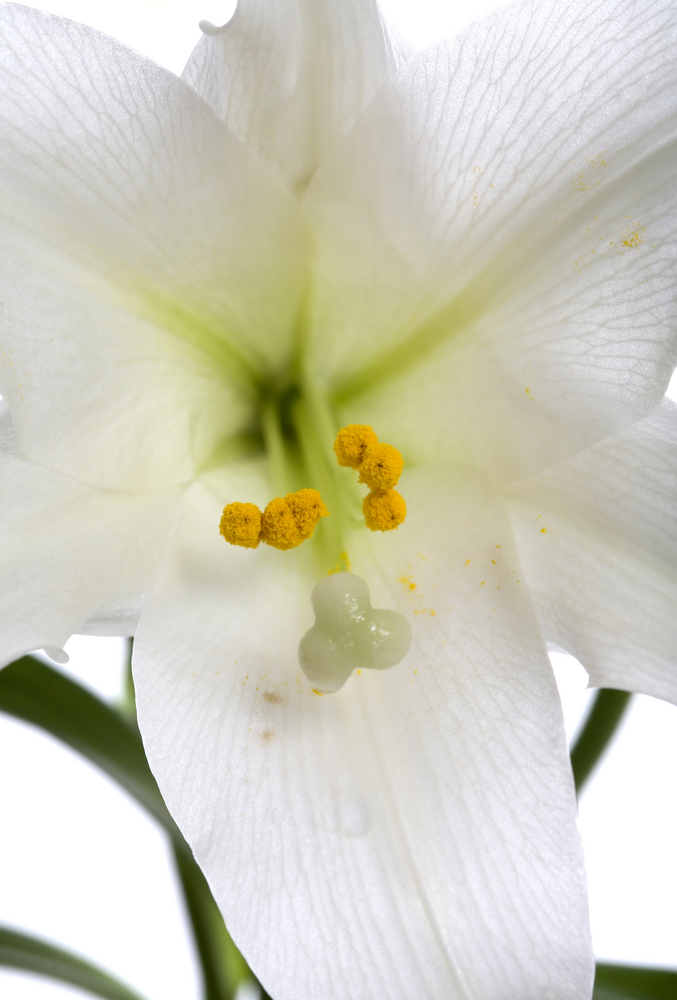People will be bringing home Easter lilies today. They are big, white and beautiful.
“The lily in the Bible is not the Easter lily,” the Rev. Dr. Frank M. “Sonny” Gada said during a talk at the Portland Flower Show earlier this month. “It is an entirely different plant and is probably very close to the clivia,” an old-fashioned houseplant that comes from South Africa.
Gada, who is the regional director of the Biblical Botanical Gardens Society of the USA (bbgsusa.com), said it is somewhat difficult to know what the plants mentioned in the Bible actually looked like, because modern taxonomy did not exist then.
The Bible says on the third day, God created the plants, and there are a lot of them, Gada said. He said there are 242 varieties of plants identified in the Bible, with 25 of them mentioned in Genesis alone.
One of the most common plants mentioned in the Bible, Gada said, is the grape — which is used for the wine in the Bible. Passages describe Noah planting a vineyard, Jesus turning water into wine, and the disciples drinking wine at the Last Supper. The grapes in the Bible are similar to the grapes of today.
But the apple that Adam ate is not the apple we know today.
“There are no apples in the Holy Land,” Gada said. “It was most likely an apricot rather than an apple.”
Figs and dates are important plants of the Bible — not only for the food they provided but also for the leaves. Adam and Eve covered themselves with fig leaves after partaking of the forbidden fruit, and it is palm leaves (fig or date) that were used to cool Jesus before his execution and later burned to create the ashes for Ash Wednesday.
The Rose of Sharon mentioned in the Bible is not the late-blooming hibiscus shrub that goes by that name today, Gada said. It is more likely a plant like the anemone or the narcissus.
People grew a lot of leeks and onions in biblical times, Gada said. They also grew watermelons and cucumbers, although the fruits of those plants were quite a bit smaller than the ones we grow today.
The carob tree — the fruits of which are a substitute for cocoa — is mentioned in the Bible, at least in part as a symbol for helping future generations.
“The sons of my sons will eat this and thank me,” is a quote that Gada gave. And tree growers still say that they are planting for future generations.
Wheat and barley are both mentioned in the Bible.
“Wheat is what the rich families used to make bread,” Gada said, “and the barley was for the others.”
If you wanted to create an herb garden with plants mentioned in the Bible, it would be fairly easy and still useful to the modern cook.
Anise is mentioned in Matthew, coriander in Exodus and Numbers, cinnamon in Exodus and Revelations, cumin in Isaiah and Matthew, dill in Matthew, garlic in Numbers, mint in Matthew and Luke, mustard in Matthew, and Rue in Luke.
Gada also has a cake recipe that provides only Bible verses, and people have to check the Bible to find the ingredients.
Gada said the purpose of his group is to encourage people — at churches or other public buildings as well as at home — to plant biblical gardens. The group will provide assistance and advice about how to adapt those plants to the local climate.
Another good source for information would be the book “Plants of the Bible and How to Grow Them” by Allan Swenson, which I read a long time ago before I began writing this column.
Swenson, who lives in Kennebunk, also wrote books on biblical herbs and flowers, but this one gives you a little bit of everything. I checked, and there are still copies available on Amazon.
HERE’S SOME ADVICE for Sunday. A lot of people get plants as gifts for Easter. The traditional one is the Easter lily. But people also give hydrangeas, azaleas, tulips, hyacinths, daffodils and calla lilies.
Just keep them lightly watered — but not soaking wet — until they go by. Then what do you do with them?
The hyacinths, tulips and daffodils are easy. They will live outside in Maine, so once the snow goes and the ground isn’t too wet, plant them. Calla lilies are not hardy, but you can put them outside for the summer, bring them in for the winter and keep enjoying them for years.
The lilies, azaleas and hydrangeas are more difficult. Some are hardy enough to survive outside in Maine; others are not. And for these kinds of supermarket plants, the labels are no help at all.
What Nancy and I do is plant them outside. If they live, you have a nice plant. If they don’t, it’s OK — you were just going to throw them away anyway.
Tom Atwell has been writing the Maine Gardener column since 2004. He is a freelance writer gardening in Cape Elizabeth and can be contacted at 767-2297 or at:
tomatwell@me.com
Send questions/comments to the editors.



Comments are no longer available on this story